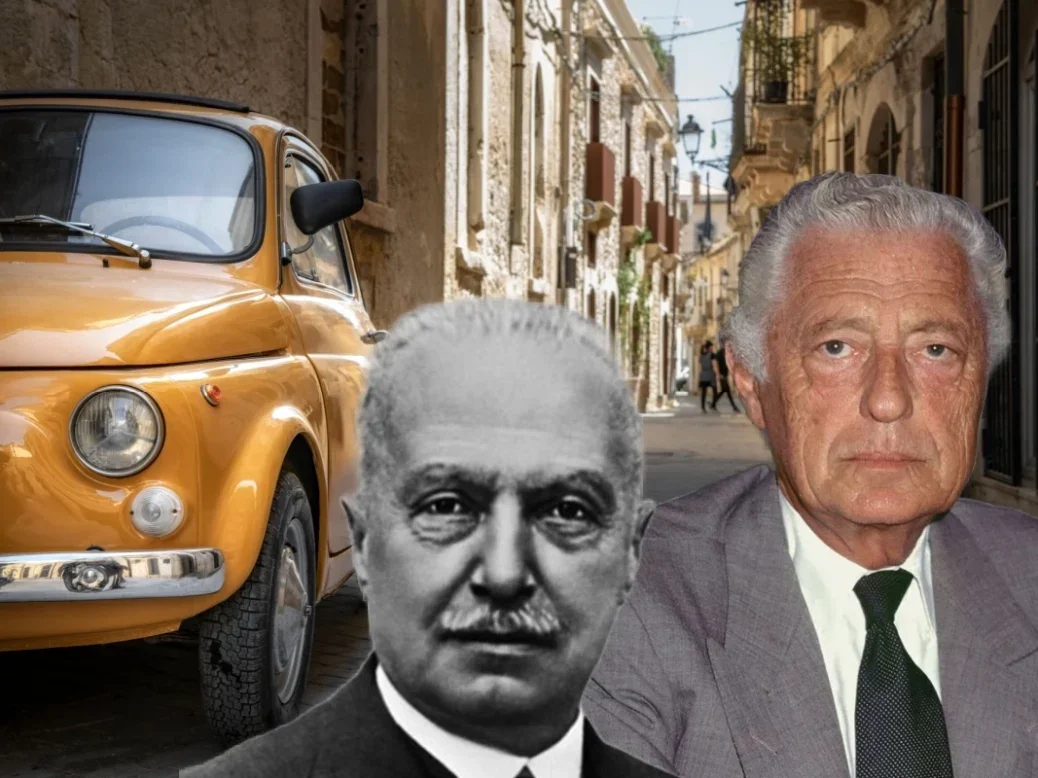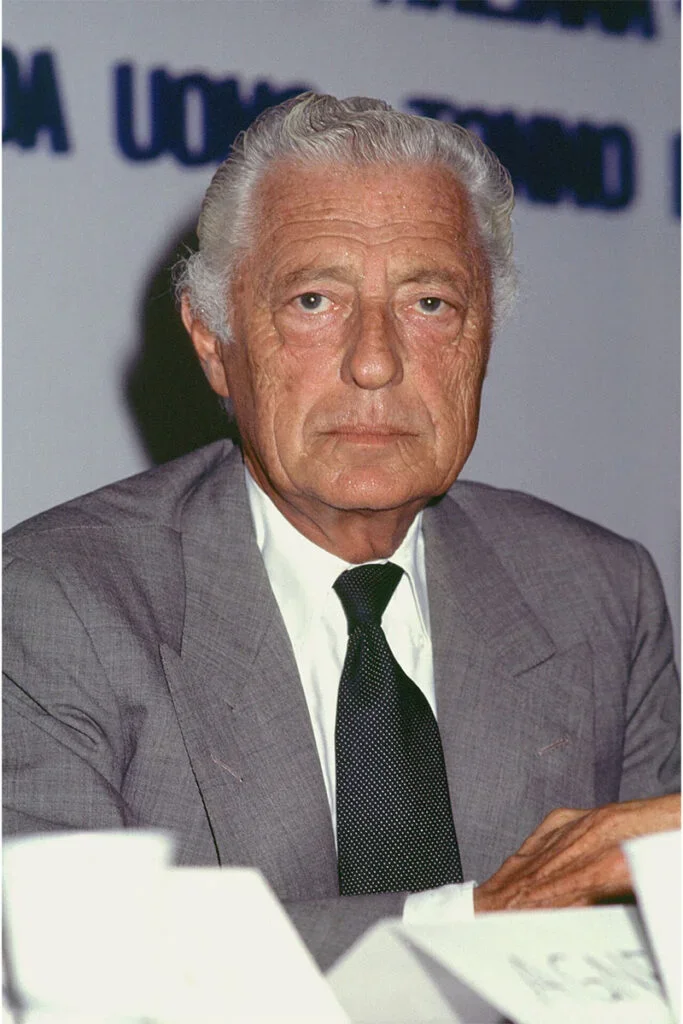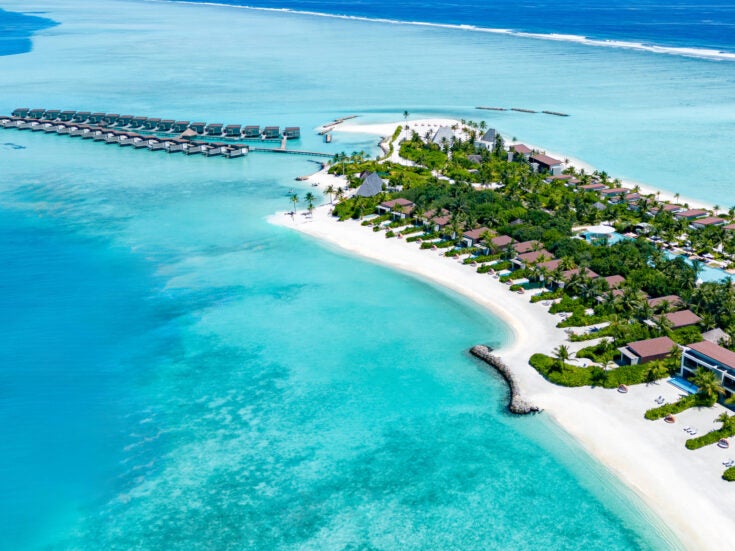
The Agnelli family, Italy’s industrial royalty, have played a pivotal role in shaping global business and culture.
Through their control of Fiat, Italy’s largest car manufacturer, and investments in Ferrari, Juventus football club, luxury brands and national newspapers, the family have amassed a $13.5 billion fortune.
But their wealth has not protected the Agnelli family from tragedy and discord, drawing comparisons to the Kennedy dynasty in the US.
And, like the Kennedys, their huge wealth and heady mix of glamour, feuds and tragedies have captivated people, in Italy and beyond.
In recent years, the family has made headlines because of a bitter 20-year inheritance feud. Will this succession drama drive the Fiat family apart?
Who are the Agnelli family?
Giovanni Agnelli: beginnings

Giovanni Agnelli’s entrepreneurial spirit laid the foundation for what would become one of the most powerful industrial dynasties in Europe when he co-founded Fiat (Fabbrica Italiana Automobili Torino) in 1899, bringing mass-produced cars to continental Europe.
The brand became synonymous with Italian automotive innovation, producing iconic vehicles like the Fiat 500, which became a symbol of Italy’s post-war economic recovery.
During his lifetime, the Agnellis began what has become a long-standing ownership of Juventus Football Club, one of the most successful and storied football teams in Europe.
Tragedy hits the family
Despite his success, Giovanni’s life was marked by the death of his son Edoardo Agnelli at just 43 when his seaplane crashed en route to Genoa. Giovanni’s daughter-in-law, the half-American aristocrat Virginia Bourbon del Monte known for keeping a leopard on a lead, died 10 years later – just 15 days before her father-in-law when the car she was travelling in collided with a US army truck in November 1945.
[See also: The biggest billionaire family feuds]
After the death of his direct heir, Giovanni’s grandson, Gianni Agnelli, known as ‘L’Avvocato’ (The Lawyer), took over Fiat in the 1960s and transformed it into an international powerhouse. Under his leadership, Fiat expanded globally, acquiring stakes in companies including Ferrari, Lancia, Alfa Romeo, and Maserati, and becoming a major player in the global motor industry.

Gianni Agnelli: the Italian playboy who reinvented Fiat
Born in 1921, Gianni Agnelli’s impeccable style and connections with world leaders, artists, and celebrities, took his family’s name beyond motorcars, and he became a significant figure in Italian politics and society, helping to shape the country’s direction during a tumultuous period of strikes, terrorism and protests.
Gianni married a half-American aristocrat, Marella Caracciolo di Castagneto, a glamorous model and one of Truman Capote’s famed societal group ‘Swans’.
But his life was also scarred by loss. His brother Giorgio was diagnosed with schizophrenia in the 1960s and died aged 35 while receiving treatment at a Swiss clinic. His son Edoardo Agnelli III died at just 46 after falling from a motorway bridge in Turin.
His nephew, Giovannino Agnelli, son of Gianni’s brother Edoardo, was being groomed to be Fiat’s heir when he was diagnosed with cancer. He died aged 33 in 1997.
A succession drama
Gianni Agnelli died in 2003, and with his passing the family’s business interests once again skipped a generation, and it was his grandson, John Elkann, who took the reins.
Elkann diversified the Agnelli holdings beyond automobiles, with investments in sectors such as media, finance, and technology.
In 2014, Elkann merged Fiat with Chrysler, creating Fiat Chrysler Automobiles (FCA), solidifying the family’s influence in the global motor industry. Elkann also led the creation of Stellantis, a merger between FCA and the French automotive group PSA. He now chairs the automaker Stellantis and is the CEO of Exor.
But, 20 years after Gianni’s death a fierce inheritance battle is pitting Elkann against his mother, Margherita, Gianni’s only surviving child.
The dispute has its origins in an inheritance deal known as the 2014 Geneva pacts that cemented Elkann’s position as Gianni Agnelli’s chosen successor but effectively sidelined Margherita.
She was given property, works of art and other liquid assets from Gianni’s estate, but renounced the shares of the family company, which was then on the brink of bankruptcy. In return, she was reported to have received 1.2 billion euros ($1.3 billion).
The second pact covered the estate of Margherita’s mother Marella, who died 15 years later in 2019 aged 91. Marella left her shares in Dicembre (a key part of the ownership structure of Exor) to three of her grandchildren, John, his brother Lapo and sister Ginevra, from Margherita’s first marriage to journalist Alain Elkann.
Now, Margherita wants the pacts to be rescinded to be able to give her children with her second husband Serge De Pahlen, a Franco-Russian former Fiat executive, a share of their grandmother’s estate.
The dispute had been dormant for a few years, but Margherita took it up a gear earlier this year when she filed a legal complaint for alleged tax irregularities related to the inheritance left by Gianni Agnelli.
Her sons say that they feel ‘grief and pain’ over their mother’s recent accusations. It looks like this very public battle is likely to continue to drive the Fiat family apart and fuel newspaper headlines.







